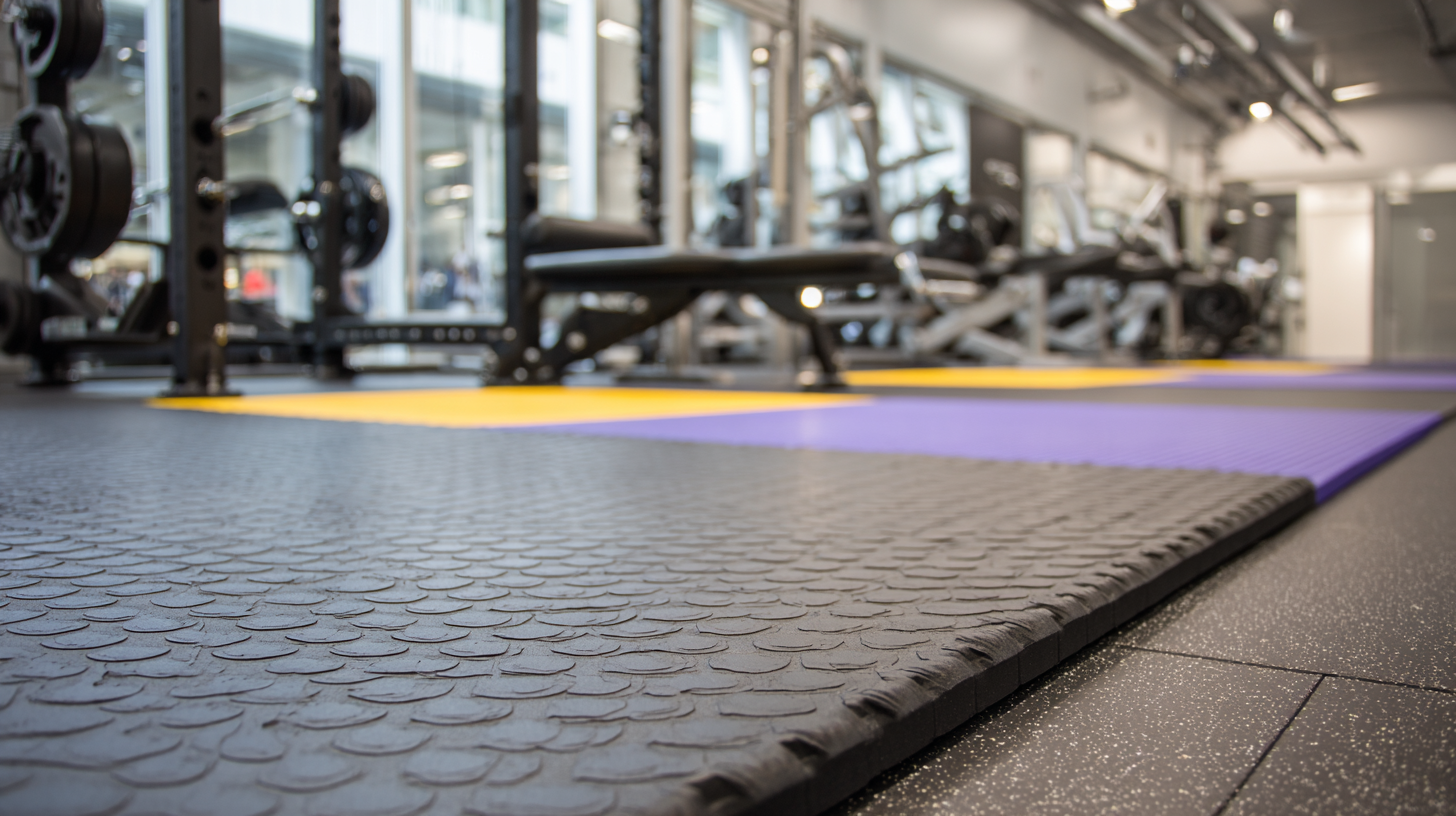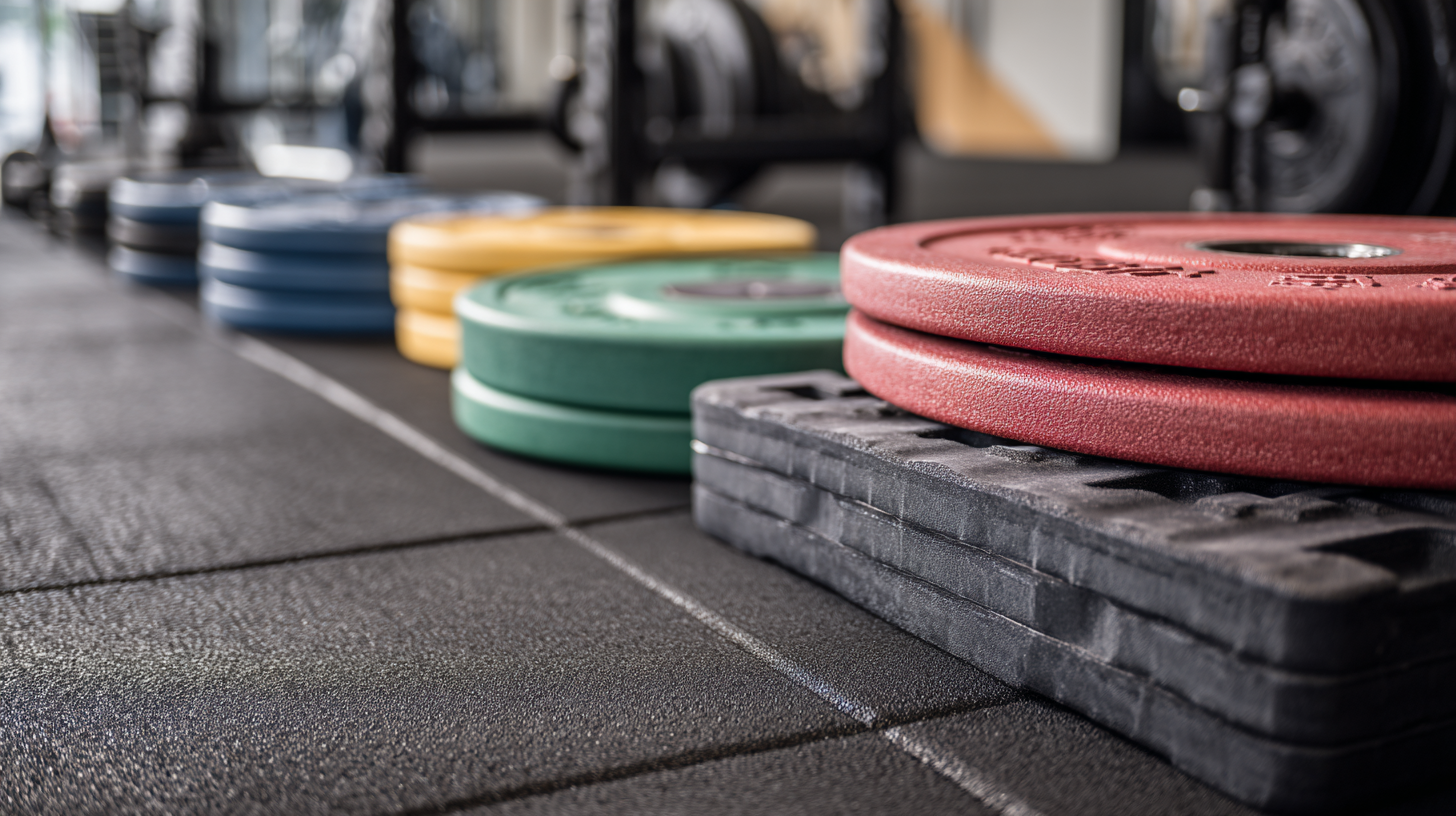Understanding the Benefits of Various Types of Gym Floor Mats for Optimal Performance
In the realm of fitness and wellness, the importance of selecting the right gym floor mats cannot be overstated. According to a recent report by IBISWorld, the gym flooring market has experienced consistent growth, driven by the increasing health-consciousness among consumers and an expanding gym culture. Specifically, gym floor mats provide critical benefits such as enhanced safety, improved traction, and injury prevention, contributing to optimal performance during workouts.

With various types of gym floor mats available, including rubber, foam, and vinyl, each material offers unique advantages tailored to different activities. This blog will delve into the benefits inherent to each type, helping fitness enthusiasts make informed decisions to maximize their training experience. Understanding these distinctions is essential for both gym owners and individual users, aiming to create a safe and efficient workout environment.
Types of Gym Floor Mats and Their Unique Benefits for Enhanced Performance
When it comes to enhancing performance in a gym setting, choosing the right type of floor mat can make a significant difference. Different gym floor mats serve distinct purposes, catering to various activities and preferences. For instance, rubber mats are renowned for their durability and shock absorption, making them ideal for weightlifting and high-impact workouts. They provide a sturdy surface that reduces the risk of injury while offering excellent traction, allowing athletes to perform their best.

Foam mats, on the other hand, are perfect for activities that require comfort and cushioning, such as yoga or Pilates. Their softer surface helps to alleviate joint pressure, promoting longer workout sessions without discomfort. Additionally, interlocking foam tiles provide versatility, allowing gym owners to easily customize their workout spaces.
Meanwhile, vinyl mats are easy to clean and maintain, making them a practical choice for multipurpose gyms that accommodate various activities, including group classes and martial arts. By understanding the unique benefits of each type of gym floor mat, users can make informed choices that contribute to optimal performance and an enhanced workout experience.
The Importance of Shock Absorption: How Mats Protect Joints and Muscles
When engaging in physical activities, the importance of shock absorption in gym floor mats cannot be overstated. High-impact exercises, such as weightlifting, jumping, or even aerobic routines, place considerable stress on your joints and muscles. Quality gym mats are designed to absorb shock, reducing the impact force transmitted through your body during workouts. This feature not only enhances comfort but also minimizes the risk of injuries, allowing you to push your limits safely.

Moreover, the protective benefits of gym floor mats extend beyond just cushioning. Effective mats provide stability and traction, preventing slips and falls during intense workouts. By creating a secure surface, they enable athletes to maintain proper form and focus on their performance. Investing in high-quality mats can significantly improve your workout experience, as they support your body's biomechanics while safeguarding you against the long-term effects of repetitive strain and trauma.
Choosing the right type of gym floor mat becomes essential for anyone serious about optimizing their fitness routine.
Choosing the Right Material: Comparing Rubber, Foam, and Vinyl Gym Mats
When selecting gym floor mats, the material plays a critical role in ensuring optimal performance during workouts. Rubber mats are often the gold standard for heavy-duty exercise spaces. They provide excellent shock absorption, making them ideal for weightlifting and high-impact activities. Rubber is also durable and resistant to wear, ensuring longevity even with regular use. Additionally, they offer a non-slip surface, enhancing safety during intense training sessions.
On the other hand, foam mats are perfect for activities that require comfort and cushioning, such as yoga or Pilates. The softness of foam allows for easy movement and flexibility, making exercises more enjoyable. These mats are lightweight and portable, which is advantageous for studios that need to reconfigure their space frequently. However, they may not hold up as well under heavy equipment as rubber mats.
Vinyl mats offer a blend of durability and ease of maintenance, making them great for multipurpose gym environments. They are water-resistant and can be easily wiped down, making them ideal for group classes where sweat and spills are inevitable. While vinyl provides less cushioning than foam, it supports a wide range of activities and fits various workout styles, making it a versatile choice for gym owners.
Understanding the Benefits of Various Types of Gym Floor Mats for Optimal Performance
| Mats Type | Material | Durability | Shock Absorption | Maintenance | Ideal Uses |
|---|---|---|---|---|---|
| Rubber Mats | Recycled rubber | Highly durable | Excellent | Low maintenance | Weightlifting, high-impact workouts |
| Foam Mats | EVA foam | Moderately durable | Good | Easy to clean | Yoga, Pilates, general exercise |
| Vinyl Mats | Vinyl composite | Durable | Fair | Moderate maintenance | Aerobics, dance, multi-purpose areas |
Portability and Versatility: Mats for Different Fitness Spaces and Activities
When it comes to fitness spaces, the right gym floor mats can significantly enhance your workout experience. Portability and versatility are essential traits that cater to various activities, from yoga and Pilates to high-intensity interval training. Mats that are lightweight and easy to roll up can make transitioning between different workouts seamless, allowing for a more dynamic training environment.
**Tip:** When choosing your mats, consider materials that provide both durability and comfort. Look for mats with non-slip surfaces to ensure safety during high-impact exercises. For yoga enthusiasts, thicker mats often offer additional cushioning, while thinner mats may be preferable for cardiovascular workouts where stability is key.
Additionally, the ability to adapt your gym floor mats to different fitness spaces is crucial. For instance, using interlocking foam tiles can help create a custom workout area for specific needs. These tiles are not only portable but can also be easily rearranged to fit different layouts.
**Tip:** Keep your goals in mind when setting up your space. If you often switch between various forms of exercise, having mats designed for multi-purpose use can save time and enhance overall workout efficiency.
Understanding the Benefits of Various Types of Gym Floor Mats for Optimal Performance
Maintenance Tips: Ensuring Longevity and Hygiene of Your Gym Floor Mats
Maintaining gym floor mats is crucial not only for hygiene but also for the longevity and performance of the mat itself. According to a report by IBISWorld, the fitness equipment industry, including gym mats, has seen consistent growth, emphasizing the importance of upkeep to maximize investments. Regular cleaning with appropriate disinfectants can help eliminate up to 99.9% of harmful bacteria, reducing the risk of infections that common gym-goers face. Professional recommendations suggest deep cleaning mats at least once a week and spot cleaning immediately after use to prevent buildup of sweat and grime.
Furthermore, the lifespan of gym floor mats heavily relies on the type of mat and its maintenance. Industry statistics reveal that well-maintained mats can last up to 5-10 years, whereas poorly maintained mats may need replacement within a couple of years. To ensure durability, it's essential to follow the manufacturer’s guidelines for cleaning and care. Utilizing mat covers during periods of inactivity can also prevent unnecessary wear. By prioritizing maintenance, gyms can not only enhance hygiene standards but also reduce costs associated with frequent replacements.
